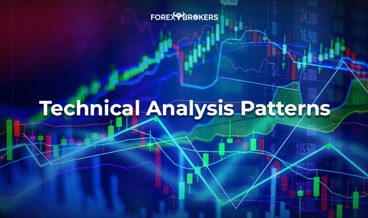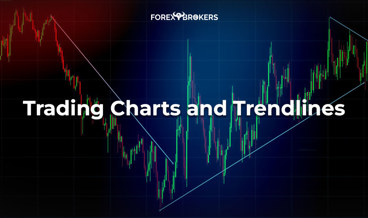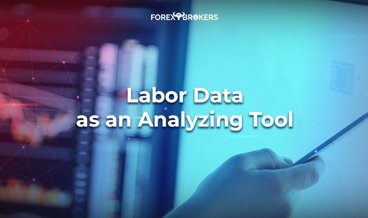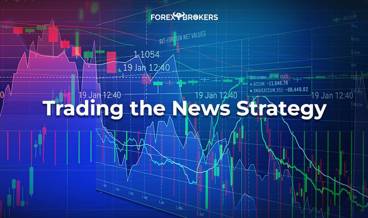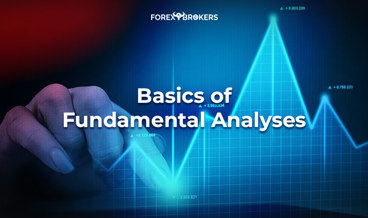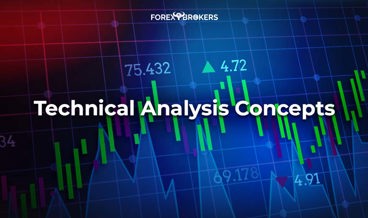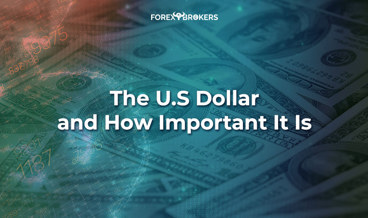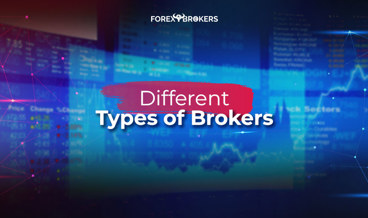More complex than technical analysis, fundamental analysis is responsible for most of the market’s volatility. Not only the currency market reacts strongly to changes in fundamentals, but also all financial markets.
It is such a broad field that it is difficult to quantify and rank the events and phenomena as part of fundamental analysis. A simple definition would be that anything that is not part of technical analysis belongs to fundamental analysis. Anything you can imagine that has the power to move a market, any market, belongs to fundamental analysis.
But if we are to have an in-depth look at fundamental factors, we see some that appear again and again, influencing prices. For the currency market, it is more complicated than for other markets to establish what the fundamental aspects are. For instance, for the stock of a publicly listed company, most of the fundamental analysis deals with interpreting the balance sheet and other financial statements, together with the company’s earnings reports.
However, things have become more complicated in the currency market. A million things may influence a currency, and sometimes the market moves without knowing the reason for it.
Because currencies belong to countries and reflect the country’s or region’s economic strength, a good chunk of fundamental aspects refers to economic evolution. The strength or weakness of an economy influences the value of its currency. Therefore, one critical part of fundamental analysis for the currency market is given by the economic news in a country or region.
Macroeconomic factors play a vital role in the demand for a currency too. For example, changes in foreign policies affect the monetary flows from one currency to another. Thus, demand for a currency is on the rise while other currency falls in disgrace. Therefore, the sum of all factors, other than technical, is fundamental analysis.
Interpreting Economies around the World
Most of the fundamental analysis means interpreting economic indicators. Market participants look at various indicators to decide if the economy is getting stronger or weaker.
The funny thing is that even central banks (they, too, are market participants) do the same thing as traders do. They meet regularly with the same purpose of interpreting economic activity. At the end of a meeting, central banks set the monetary policy by easing or tightening if the economy is doing worse or better than before.
The same things are valid for traders. They interpret the economic activity too, but instead of setting the monetary policy, traders take a position in the market. If traders conclude that the economic activity weakened or it will get worse in the future, the natural reaction is to sell the currency. On the other hand, healthy economic activity or expectations of robust economic growth translate into buying the currency.
We can say, therefore, that all market participants look at economic growth and interpret the latest economic indicators. While central banks use the information to set the monetary policy, traders use it to buy or sell currencies, trying to guess what the central banks will do with the interest rate.
The key to successful economic analysis is to use the same set of factors to analyze all economies. This way, a standardized approach makes it easier for traders to see the differences between economies around the world and to decide if the currency is bound to strengthen or weaken.
Economic Indicators Part of Fundamental Analysis
An economic indicator provides information about the state of the economy. Three categories of economic indicators exist:
- Leading
- Coincident
- Lagging
In many economies in the world, composites of indicators exist, which are meant to interpret economic activity better. Because the United States is the largest economy in the world and the USD is the world’s reserve currency, economic activity in America is a leading indicator of the global economy.
It is said that if America sneezes, the global economy catches a cold. It is meant to illustrate the importance of the American economy on the world stage. For this reason, we’ll have a look at some essential leading coincident and lagging indicators in the United States and describe their usefulness for interpreting and analyzing economic activity. Using the same measures, one can find out how other economies perform on the same metrics and compare with what the United States economy shows.
Thus, the differences in the business cycle, if any, point to a potential strength or weakness in the currency market. Therefore, an opportunity for trade may appear based on interpreting the fundamental differences between two or more economies.
Leading Economic Indicators
The turning points of these indicators precede the overall economy. In plain English, leading indicators help traders see economic turning points earlier.
For instance, if an economy is in recession, all eyes are on the leading economic indicators. If the economy is to turn, these indicators are the first ones to show the possible end of the recessionary conditions.
In interpreting economic indicators, it is all about positioning in the economic cycle. Leading indicators, in particular, are useful in anticipating cyclical turns, so traders should position themselves to take advantage of the upcoming changes.
It is worth mentioning one thing before going into more detail regarding the leading economic indicators. Trading based on what leading indicators show differs from technical trading.
Traders using leading indicators to buy or sell a currency often find themselves alone in the market. The reason is that economic turns take time to form, and leading indicators are only an early sign of what will come. It takes plenty of time for all the pieces of the puzzle to come together and the domino to start falling. Therefore, keep in mind that trading based on leading indicators and fundamental analysis, in general, takes more time and usually requires more resources than trading with technical patterns.
Below, we list some of the most relevant leading economic indicators to follow. Some of them may seem obvious to be part of this list, but some others will take by surprise most traders, even the ones using fundamental analysis as the basis for their trades.
- S&P 500
It may come as a big surprise for many traders to find out that the S&P 500 in the United States is a leading economic indicator. Before going into details, what is S&P 500?
This is a stock market index in the United States that has at its core the market capitalization of the largest five hundred companies in the United States. Considered the best representation of the United States equity market, it represents a benchmark for the investment industry and, for many, a benchmark for the world’s equity market. So what does it have to do with the leading economic indicators?
The thing is that the equity market often anticipates turning points in the economy. Therefore, the stock market offers early signals about a possible economic upturn or downturn, and the S&P 500 acts as a bellwether.
Underperforming S&P 500 points to possible economic weakness and acts as a recessionary indicator. Institutional investors use the info as a sign to redistribute the allocation of the portfolio in such a way as to protect investors’ wealth.
- New Orders Index Reflected in the ISM
New orders are linked to demand levels. The steady rise in new orders levels points to strong demand ahead. It signals a potential uptick in economic activity and a turning point if the actual economy is in recessionary conditions.
On the other hand, the weakening of demand leads to recession. As explained above, demand weakening is first seen in the declining new orders levels.
The ISM stands for Institute for Supply Management. It is the institution in the United States responsible for monthly releasing the change in new orders for final sales.
Traders need to do some digging to find out the new orders level. It isn’t like you have a look at the economic calendar and find the date for the release. Instead, the economic release is called ISM manufacturing and non-manufacturing, and it is the equivalent of the PMI (purchasing managers’ index) in the rest of the world.
Just like the PMIs, the ISM releases show economic strength compared with the fifty level. Values bigger than fifty points to economic expansion, while values below fifty show economic recession.
Traders dig into the release to have a look at the new orders. This way, they interpret the demand level and use the information as a leading economic indicator.
- Federal Funds Rate versus 10Y Treasury Yields
While not an economic release, the difference between the two is a reliable indicator of how the economy is doing. The Fed sets the federal funds rate at the end of the FOMC (Federal Open Market Committee) meeting held every six weeks.
On a Wednesday, the Fed releases its decision to cut, raise, or keep the federal funds rate on hold. Also called the overnight borrowing rate, when compared with the 10Y Treasury yield, it gives a glimpse into the economic activity in the United States.
Because rates follow the economic cycle (a strong economy leads to higher overnight rates, and a weak economy leads to the Fed cutting rates), traders look at the spread versus the 10Y Treasury yields. Long-term yields reflect the expectations of short-term interest rates. For traders, short-term interest rates are all that matter, as the currency market is the first to react and sometimes reacts in anticipation.
Therefore, higher yields for the 10Y Treasury point to short-term rate increases as a response to the economic upswing. Traders interpret the wider spread between the 10Y Treasury and the overnight borrowing rate as bullish for the currency because the Fed will turn hawkish and raise the rates because of economic growth.
On the other hand, when the spread between the two tightens, traders begin selling the USD or reducing their exposure to the American dollar. The Fed is expected to ease because of a downturn in the economic cycle.
- Consumer Expectations
Consumer expectations are a big part of interpreting economic activity and the business cycle and, therefore, a significant fundamental analysis element in every economy.
They have a key role not only on the consumer side but also when interpreting inflation. For central bankers and traders alike, anchoring inflation expectations is more important than the actual inflationary level. We’ll treat inflation in more detail in a future article dedicated exclusively to the subject.

Coming back to consumer expectations as a leading economic indicator, think of expectations for both business and economic conditions. Optimistic consumers increase spending. This leads to an uptick in economic activity and, ultimately, economic growth. Therefore, it is bullish for the currency as the central bank starts delivering hawkish speeches and eventually raises the short-term interest rate level.
On the other hand, a worried consumer won’t spend much. Instead, he/she will postpone a purchase. Such a simple decision may look harmless but has dramatic consequences for the economy.
Postponing the buying decision leads to an increase in inventory levels on the retailers’ side. As a consequence, retailers won’t order that much from the wholesalers.
A decrease in orders to the wholesalers means that they, as well, drop the orders to factories and their suppliers. Unemployment begins to rise as layoffs grip the economy. Ultimately, the recession appears, and the central bank cuts rates. Thus, the low level of consumer expectations for both business and economic conditions is bearish for the currency. Traders start selling or reducing the exposure to the currency in anticipation of the ripple effects in the economy.
- Average Weekly Hours (AWH)
A critical leading indicator, Average Weekly Hours, offers a quick confirmation of the state of an economy. In economic expansions, businesses first increase overtime and then hire new people. A steady AWH, coupled with an increase in payrolls, suggests an economic upturn, being bullish for the currency.
During economic booms as well as in recessions, contrarian views exist. While technical traders use reversal patterns to identify potential turns in a currency’s trend, fundamental traders use leading economic indicators that point to a contrarian view.
AWH is such an indicator. When all things go well in an economy, and everyone’s happy, the AWH pointing lower indicates the businesses cut overtime. That’s impossible in economic expansion and represents an early sign that something is wrong with the current cycle. Fundamental traders use this information to position correctly.
- Building Permits
An economic release often ignored by many traders, the number of building permits offers a glimpse into the construction sector. Construction is a key driver of economic growth, with many economies (e.g., the United Kingdom and Australia) calculating a PMI dedicated to the construction sector.
The number shows future construction activity because many localities require a building permit before actual construction begins. A steady rise in the number of building permits indicates an uptick in economic activity because of the implications of the construction sector for the rest of the economy.

The construction sector generates economic activity on multiple levels, both in the horizontal and vertical industries. Imagine how it works from an economic point of view. First, investors buy a building plot that generates income in taxes paid locally. Second, investors hire architects to design the building and other professionals to obtain all the necessary documents to apply for the building permit.
Third, after the building permit comes out, construction begins, and construction companies with various expertise start working on the project. Next comes the furniture, and finally, the new building may even generate income either via a private lease or via industrial use.
- Financial System’s Strength
It may seem inappropriate, but the strength of the financial system is a leading economic indicator. In the United States, there’s an index that aggregates information from multiple leading financial indicators and points to the ability of the financial system to cope with stress.
In the aftermath of the 2008 financial crisis, many countries around the world reacted and changed their rules to strengthen their banking system. Ultimately, the housing crisis led to a banking crisis, with the Eurozone close to collapse as banks were affected by the liquidity crisis that followed.
One way to strengthen the financial system is to raise the reserve requirements in the banking system. Another way is to continually apply stress tests to the banking system and see how many banks fail. If you want, it is like training for the unexpected, like firefighters train for the most challenging situations.
A vulnerable financial system amplifies the negative shocks and their effects, as happened in the 2008 financial crisis. Should the financial system have been healthier, the crisis would not have been propagated so quickly and with implications all over the world. In the end, it resulted in a widespread recession not only in the United States, the home of the housing crisis but also all over the world as investment banks had exposure to the American housing sector.
Coincident Economic Indicators
Such indicators show the current economic state. When interpreting them, the fundamental trader doesn’t want to spot potential turns in the business cycle but merely a continuation of the current conditions.
If you want, coincident economic indicators represent for the fundamental trader what the continuation patterns are for the technical trader. The technical trader uses continuation patterns to trade in the direction of the underlying trend, confirming the bullish or bearish market.
The same is valid for the fundamental trader who uses coincident indicators. He/she looks for confirmation of the economic expansion or recession and trades accordingly.
- Non-Farm Payrolls
If the AWH is a leading indicator because of how fundamental traders interpret overtime, the NFP (non-farm payrolls) confirms the already recessionary or expansionary economy. Once recession or expansion is in full swing, businesses begin adapting the payroll numbers, and the NFP confirms the economic conditions.
Consistent job loss in a recession points to further economic weakness down the road. Selling the USD might be the appropriate trade to consider. Uninterrupted job creation, coupled with an increase in the labor participation rate, points to economic expansion underway. Being long, the USD might just be the right trade.
- Industrial Production
As a coincident economic indicator, industrial production is volatile. In comparison, the services sector is much more stable.
Naturally, industrial output declines in recession, confirming the shrinking of the economy. On the contrary, during an economic expansion, industrial output rises and confirms the booming economic conditions.
Lagging Economic Indicators
Finally, lagging economic indicators turn later than economic activity. What do we need them for? The answer comes from the value they offer for interpreting past economic conditions.
Once again, it all comes down to the business cycle. Because the lagging indicators offer a clue about past economic conditions, traders use them as confirmation for the last economic stage so they can forecast the future phase of the cycle.
- Inflation
The consumer price index, or CPI, adjusts very late in the business cycle. Usually, by the time inflation rises or falls, the economy is already well into recession or expansion.
- Unit Labor Cost
The unit labor cost adjusts very late in the cycle too. They rise into the early stages of the recession because businesses are reluctant to let workers go.
As a result, traders look at the unit labor cost’s evolution in time. Steady rising trends come as confirmation that the recession already began.
By the time the central bank comes and eases the monetary policy, thus affecting the value of the USD, the prepared fundamental trader is already in a short position.
- Inventory–Sales Ratio
This one has a straightforward interpretation. During the business cycle, a slowdown in sales leads to an increase in inventory levels.
Therefore, traders first wait for classic indicators like retail sales to see the evolution. Next, they compare the outcome with what the inventory levels indicate. If they diverge (i.e., one rising, the other one falling), that’s a confirmation of the economic cycle. If they point in the same direction, the retail sales number can’t be trusted yet, and probably opening a position based on the inventory–sales ratio isn’t appropriate at that moment.
Macroeconomic Factors
Changes in the macro landscape lead to massive capital flows. When capital moves from one part to another, it means exchanging one currency for another. Therefore, macroeconomic factors have a significant role in the currency market’s volatility and represent a fundamental factor difficult to ignore.
Examples are everywhere around the globe, and we’ll discuss some here. But before doing that, note that every day and every hour, something may come up to change the course of markets and capital flows. When something changes at the macro level, the market usually begins large trends that take months or even years. Again, when capital moves, the flows influence the currency market for a long time.
Macroeconomic policies change when foreign exchange policies change. The bigger the economy, the more important the changes are. Recently, the United States of America, the world’s largest economy, has been responsible for some of the most relevant changes in foreign policy, leading to heavy capital flows into and out of the USD. Therefore, the currency markets were the first ones to react to changes in American foreign policy.
Changes in Tax Regimes
We use examples from the United States for a reason, but similar events in some other big economies have the same impact on the respective currencies. Changes in fiscal policy result in massive capital flows.
The recent changes in the fiscal space made by Trump’s administration illustrate how macroeconomic factors influence the value of a currency. By reducing the corporate tax rate, Trump’s administration stimulated American corporations to repatriate their profits.

We all know that the world’s largest corporations come from the United States. Most of their profit is made abroad, all around the world.
Because of heavy taxation in the States, the U.S. corporations preferred (some still do) to keep part of their profits abroad, obviously in different currencies than the USD.
By lowering the corporate tax rate, Trump’s administration created a substantial international demand for USD. Corporations began repatriating the profits and bought USD. Thus, the capital flows put pressure on the upside of the USD.
Changes in Monetary Policy
It is evident by now that monetary policy and the value of short-term interest rates affect the currency market. But in some cases, changes in local monetary policy have global macroeconomic consequences.
For instance, the Federal Reserve of the United States raised the interest rate on federal funds rate from 0 to over 2 percent. For years, the interest rate differential between the USD and the other currencies in the world widened.
Not only that other central banks didn’t raise rates, but also they kept them steady or cut even more. A close look at what the European Central Bank (ECB) did at the same time reveals easing conditions, not tightening ones.
But then the Fed signaled it was ready to ease. It even cut the rates in the middle of 2019 as a so-called mid-cycle adjustment preemptive move.
Yet the USD kept rising. AUDUSD, EURUSD, and GBPUSD all made new lows on the Fed’s rate cut announcement. How come?
Investors from all over the world search for the best alternative for placing their capital. Everyone looks for the highest possible yield for their investment.
With bonds globally having a negative yield, the place to go was the U.S. bond market. One of the biggest debt issuers in the world, the U.S. attracts interest because of the positive yield for its bonds.
However, to buy U.S. bonds, one needs to pay with the local currency. You guessed, with American dollars, thus keeping the pressure on the upside on the USD on the currency market.
The examples from above are just that, two examples showing how macroeconomic factors affect the value of a currency. Many others exist, but we only wanted to illustrate their influence.
Trade Wars
We can’t leave this section without mentioning trade wars. For many years, international trade grew without significant changes in the major economic policies. However, that has come to an abrupt change lately as the United States began renegotiating old trade deals under Trump’s administration.
One of the promises during the electoral campaign was to renegotiate deals that Trump considered were unfair to America. And so he did.
It started with Canada and Mexico as the North American Free Trade Agreement (NAFTA). In the course of a few months, the United States renegotiated a new deal with its neighbors (Canada and Mexico), replacing NAFTA with the United States–Mexico–Canada (USMCA) Agreement. On ratification, the new trade agreement replaces NAFTA.
During the months that negotiation took place, the volatility of the U.S. dollar, Canadian dollar, and Mexican peso pairs reached extremes. Every small piece of information, tweet, or anything coming down the newswires moved the currency market aggressively.
China followed. At the time of writing this article, the U.S.–China trade deal is the source of great market uncertainty and volatility. That’s especially true on the JPY pairs and other Asian currencies like the Australian dollar (AUD) because of massive exposure to the Chinese economy (Australia exports a big chunk of its products to China).
Elections and Referendums
Brexit is already famous. In June 2016, the United Kingdom voted in a referendum to leave the European Union. The entire world watched breathlessly as the U.K. went to cast a vote.
Before the event, most currency pairs (and other financial markets, too) evolved in tight ranges, with uncertainty gripping risk appetite. When the referendum result became clear, the GBP pairs dropped significantly, driving volatility on other currency pairs too.

Elections held over the weekend also influence the opening prices on the market when the result takes markets by surprise. The French presidential election in 2017 saw Macron winning surprisingly, and the euro pairs opened with a gap higher, open still at the time this article is written. Trump’s election in the United States is another example of how fundamental analysis factors influence prices.
In general, elections of any kind in important countries have the power to keep the market at bay until a result is clear. Then the market swings in a relief rally.
Natural Phenomena
Extreme weather and other natural cataclysms belong to fundamental analysis too. Earthquakes, tsunamis, and extreme temperatures are powerful enough to grip an economy. Therefore, it affects the GDP (gross domestic product) and, with it, the competitiveness of its currency.
Tweets
Together with President Trump’s election in the United States, a new form of fundamental factor was born: tweeting.
Later in this academy, we’ll have an entire article pointing to the importance of Twitter as a social platform. A strong financial community, FinTwit, exists, and the news travels faster than anywhere else.
Trump’s ability to communicate with its followers (some sixty million or so) made Twitter a powerful tool in the hands of the most powerful man on earth. Sometimes Trump tweets about the trade war with China, and other times about imposing tariffs on other nations. Some other times, he even criticizes the Fed of the United States. Here’s a Twitter thread from August 9, 2019, from the official Twitter account of the President of the United States (POTUS):
As your President, one would think that I would be thrilled with our very strong dollar. I am not! The Fed’s high-interest rate level, in comparison to other countries, is keeping the dollar high, making it more difficult for our great manufacturers like Caterpillar, Boeing . . .
. . . John Deere, our car companies, & others compete on a level playing field. With substantial Fed Cuts (there is no inflation) and no quantitative tightening, the dollar will make it possible for our companies to win against any competition. We have the greatest companies . . .
. . . in the world, there is nobody even close, but unfortunately, the same cannot be said about our Federal Reserve. They have called it wrong at every step of the way, and we are still winning. Can you imagine what would happen if they actually called it right?

Anyone with an interest in financial markets sees how easy it is to influence prices and how such tweets have the power to move the market.
Conclusion
Fundamental analysis, as the sum of everything else besides technical factors, is a critical component of market analysis. It is said that, for a trade, one must have both technical and fundamental reasons. The reality begs to differ.
The truth is that many traders use only fundamental analysis as the basis for their market operations. Because fundamental changes take a longer time to be seen in the market, such traders aren’t scalpers or swing traders but rather investors with a broader time horizon for their investments.
Fundamental analysis alone is a source of great trades. But coupled with technical analysis, it offers a complete picture of what a market may do next.
Because fundamental analysis is somehow relative, no one knows what will move the markets next. There’s always something that matters for the markets, and by the time an event passes, a new one appears on the horizon.
Some traders go as far as interpreting the chances of an event being priced in the market. Sometimes that’s true; sometimes, it isn’t. As the currency market is so big, no one knows the impact of a specific event on the final prices, and this is what makes trading so interesting, as no day is like another.








